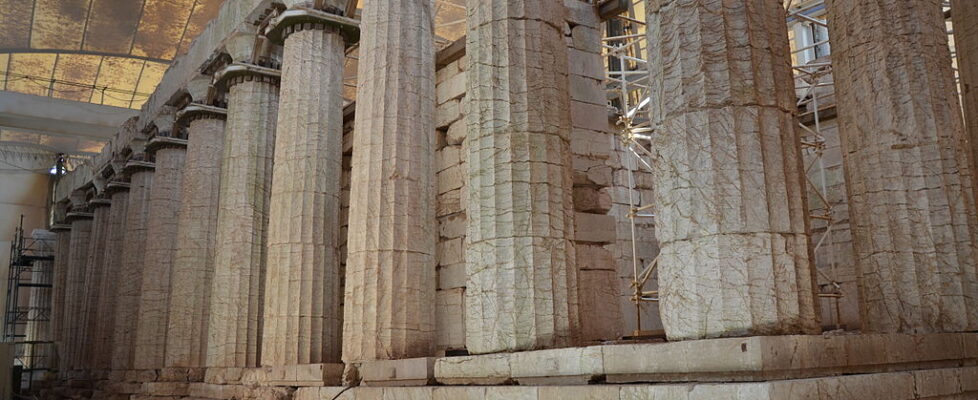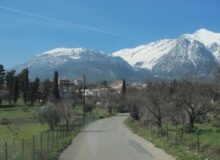The Temple of Bassae
The Temple of Bassae in Messenia in the Peloponnese of Greece is a UNESCO World Heritage Site and one of the most important archaeological sites in Greece.

The Temple of Bassae (or Vassae) is also known as the Temple of Apollo Epicurius. The name Bassae is an Ancient Greek word meaning ‘the little vale in the rocks’. It was the first place in Greece to be included on UNESCO’s list of World Heritage Sites, even ahead of the Acropolis.
Bassae is one of the least visited of the many important archaeological sites in the Peloponnese. It’s in a remote setting in Messenia, about a 20-minute winding drive south of the mountain village of Andritsaina. It’s a rugged part of the country, and visiting here is real Greek travel. We spent the night in Andritsaina and drove straight to the Temple of Bassae after breakfast. It is a truly remarkable place.
Andritsaina
Andritsaina is somewhere between a town and a village, with a population of about 2,000 people. Although it’s not on the well-trodden tourist trail, it does have a few small hotels and tavernas. It’s well worth a night’s stay before or after visiting Bassae, for some hearty mountain food, and some great views.
Andritsaina stands at an elevation of 705 m (2,313 ft), with the Temple of Bassae even higher at 1,131 m (3,711 ft). It’s only a few miles from Andritsaina to the temple.

Visiting the Temple of Bassae
What’s unusual about the temple is that it is considered so precious that a huge protective covering has been erected over it, to shield it from the elements, while excavation and conservation work is carried out. It’s a very strange experience, as from the outside it looks a bit like a circus tent, and you feel privileged to pop your head inside and see the temple itself.
It’s also a very dramatic experience, and the intimacy of being inside the tent with the temple makes the well-preserved building seem all the more impressive and imposing.
History of the Temple of Bassae
The temple was built in the 5th century BC and dedicated to Apollo Epikourios (Apollo the Helper). It’s believed to have been designed by the architect Iktinos, who was one of the two architects responsible for the Parthenon in Athens.
The temple was used up until about the 4th or 5th century AD, when the Romans closed what they regarded as pagan temples in Greece. It’s unusual in that it has examples of all three styles of Greek columns: Doric, Ionic, and Corinthian. In fact the Corinthian capital here is the oldest known example in Greece.
As with the Parthenon in Athens, the temple was plundered by the British, including the magnificent frieze. This is now on display in the British Museum in London, alongside the Parthenon Marbles. Is it too much to hope that one day it will be returned and put back in its right place on the Temple of Bassae?
Architectural Significance
- Three Classical Orders: It is unique among ancient Greek temples for incorporating all three classical architectural orders: Doric (for the exterior peristyle), Ionic (for the interior columns), and the earliest known surviving example of a Corinthian capital (on a single column in the center of the interior).
- Architect: The temple is traditionally attributed to Iktinos, the famous architect who also designed the Parthenon in Athens, though this attribution is sometimes debated by modern scholars.
- Unusual Orientation: Unlike most Greek temples that are oriented east-west, the Temple of Bassae is oriented north-south, believed by some to be for cultic reasons, such as aligning with the summer solstice sunrise.
- Design: Built between approximately 420 and 400 BC, it combines archaic features (such as its elongated shape with a 6×15 column ratio) with the serenity of the Classical Doric style and daring innovations, marking a turning point in temple architecture.





















